Battle Caucasian hat. Inspired Item
Perhaps this will surprise someone, or maybe even a little outrage, but the legendary papakh partly owes its cult significance to the Russian Imperial Army. The fact is that in the Caucasus itself the number of hats was very substantial. They also wore so-called Mithrian hats, consisting of separate vertical lobes converging to the crown of the head, and skufu, and the likeness of a yermolka, and skullcaps, and felt hats for the warm season. There was even a “hello” from the Ottoman Empire in the form of turbans. They were mainly worn by the Circassians, who closely communicated with the Ottomans. In the famous miniatures of Prince Gregory Gagarin, one can find turbans among the Ubykh nobility and among the Natukhais (all these Circassian tribes had the closest contacts with Constantinople).
Of all this assortment, it’s Papakh who will personify the Caucasus. And just thanks to Russia, and more precisely, to Russian Cossacks. The general and historian of the Caucasian war Vasily Potto wrote about the Cossacks:
Papakha. The range is incredible
Despite the abundance of other hats, the hat still stood apart. The very types of classification of popes are many. It can be classified according to the material: young lamb (kurpei) fur, lamb fur of astrakhan breed (astrakhan fur), Angora goat fur, hides and fur of adult sheep, etc. Hats can also be classified according to the type of distribution and professional aspects - astrakhan (it is also “Bukhara”, was considered festive because of the specificity of the fur and the difficulty of dressing), shepherd’s (often considered classic, made from sheep’s fur and was very magnificent, so much so that shepherds they could fall asleep on it like on a pillow) and, of course, a Cossack hat, which has a number of features.
But all this is extremely approximate. There were gray, black, white and brown hats. They even made hats with mezdra outward, and fur inside. Some hats were extremely tall - up to half a meter or more. These hats looked like battle towers tilted under their own weight. There were hats and very small ones. And, oddly enough, but this element of the mountaineer's appearance was extremely subject to fashion trends. They either expanded upward, then narrowed, then increased in size, then became more modest.
In the 19th century, entirely made of sheepskin fur began to prevail, but at the beginning of the 20th century, fashion made a sharp turn. Hats similar to a haystack were squeezed out by their astrakhan (sometimes from a kurpei) low brethren. And since each hat had its own unique manufacturing method, starting with the procurement of material, we omit this part.
Functional and social role of the hat in the Caucasus
Despite the current proverb “cap for honor, not warmth,” the functionality of the cap is quite obvious. For example, shepherd ("shaggy") hats protected a person from snow and rain, and the shepherds, who sometimes spent the night in the mountains, could use them as a pillow. And, oddly enough, it sounds, but these hats well protected the owner from sunstroke, especially if they were made of white sheepskin.
But the social role still dominated. Noble and wealthy people owned 10, or even 15, hats for all occasions. By the degree of grooming, it was possible to determine how wealthy this or that person was. Self-respecting men did not appear without a hat in public. To knock off a hat is like a challenge. And to take someone else's hat, meant to offend a person.
The loss of a papakha under any circumstances is that of the highlanders, that of the Cossacks was a foretaste of imminent death. If the owner himself tore off his hat and hit it on the ground, then this was tantamount to the statement “I fight to the death”. Such a sign existed among the Cossacks.
Among the highlanders, the cap even served as a means of ... matchmaking. A young man who did not want to express his feelings publicly had to sneak into the girl’s house late in the evening. Taking a comfortable position, the young Romeo "opened fire" right out the window with his own hat. If such an important hat did not fly back instantly, then you could count on reciprocity and send matchmakers.
Proverbs of the people also assigned a special place to the papakha: he is not a man who cannot preserve the honor of his papakha; if the head is intact, it should have a hat on it; if you have no one to consult with, ask the hack for advice.
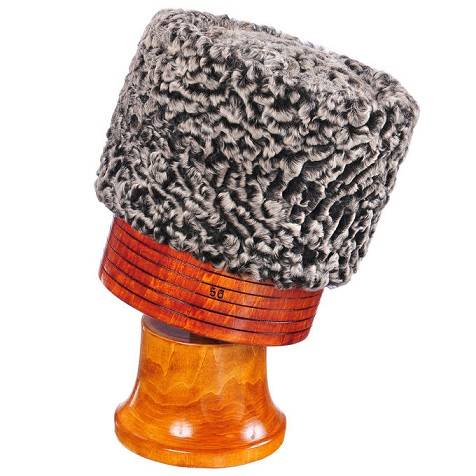
The hats became almost the main characters of fairy tales, legends and toasts. And in 1990, North Ossetian television even released a full-length picture called The Magic Papakh. The film, based on Ossetian folk tales, narrated about the funny adventures of the mountaineer-poor Uari, who opposed the three abreks, with his wit and ... father.
Papakha and her parade on the troops of the empire
It is not just impossible to precisely indicate the date when the papakha began to take root among the Russian Cossacks, this, perhaps, is not required, because it does not exist in nature. Firstly, the Cossacks had their own prototype of a hat - a large fur hat similar to the shepherd’s. Secondly, the winged hat, which was almost no different from the hat, called the hood, was extremely common as early as the 16th century. Thirdly, in the same 16th century in Moscow, Caucasian merchants began to trade in their goods. The “Chekmen of the Circassian cut,” i.e. familiar to us Circassians. But the hats did not lie down, although, of course, before the official adoption of this headdress as a charter was still very far away.
The first attempts at semi-official wearing of a hat in the service date back to the late 18th and early 19th centuries. So, General Peter Gavrilovich Likhachev, once in the Caucasus, quickly realized the need to radically change the tactics and rules of training fighters. He did not forget about a kind of acclimatization, so Likhachev was one of the first who decided to retreat from uniforms. It was then that the place of the heavy and uncomfortable shako was taken by the papakha.
Wayward and greedy for independence for the sake of solving problems, General Alexei Petrovich Ermolov followed the example of Likhachev. So, during the campaign for the foundation of the fortress of Grozny (the future city of Grozny), Ermolov, due to the fierce heat, allowed the troops to go in their shirts. Later, Ermolov behind the scenes, so to speak, privately will carry out a reform of the uniform of his troops, and the father will become part of this reform.
In 1817, the linear Cossack artillery was supposed to wear a Circassian mask of dark gray cloth with gazyrnitsy, and a hat made of cloth on the model of the Circassian with a black lamb band served as a headdress. In fact, this hat was not much different from the hat, but this word was bypassed.
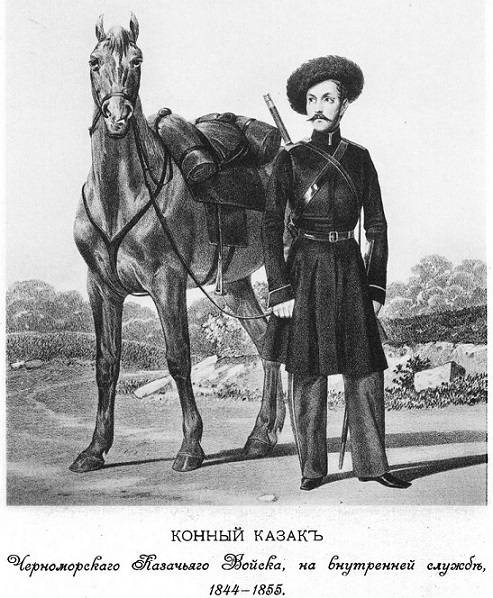
The radical official change in the views of the authorities on the uniform of the units that fought in the Caucasus will occur in 1840. The changes began with the uniforms of the Black Sea Cossack army. Fur hats with a cloth top began to enter the troops, it is sometimes called a cap. Naturally, the fighters even then began to somewhat modify the hat. Despite the fact that in rare cases the hat itself softened the blow even of the checkers, the Cossacks put a small piece of metal under the cloth cap.
Since then, Papakha began her march in the army. In the mid-19th century, the regiments of the Separate Caucasian Corps received hats as official uniforms. From the beginning of the second half of the 19th century, they began to officially wear a cap in the Orenburg and Siberian corps.
Finally, on February 3, 1859, a military detailed description of the approved headgear was published. The height of the cap (22 cm), the material, the shape of the cap and its color, depending on the rank, type of army and place of service, were indicated. Up to tenths the sizes and color of the galloons were indicated, with which the seams of the hat were trimmed.
In 1875, Papakha reached Eastern and Western Siberia. The senior and lower ranks of the troops located in this vast region were obliged to wear hats on the model of Cossack units. Of course, such a wide march of the papakha across the army divisions introduced certain corrections into the unification and cheapening of the production of this headdress. So, in the same Siberia, hats were made from merlushka (skin of a lamb of a coarse breed of sheep). And although the magnificent shepherd’s hats brought a certain unique Caucasian flavor, they unmasked their positions in battle, and long hair interfered with aiming. Thus, the shorthair merlushka solved several problems at once.
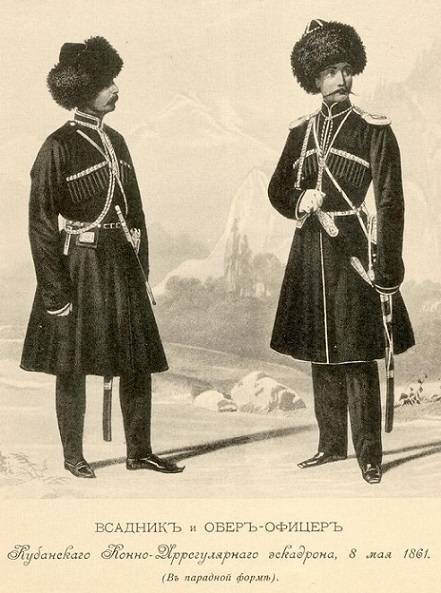
Finally, after a series of improvements for the sake of the greatest functionality in 1913, the cap was introduced for the entire personnel of the army. It was the papakha of the pre-war model who entered the great and terrible period of the revolution. Despite the planting of the famous Budenovka in 1919, the papakha continued to be actively used both by the Red Army and in the ranks of the White movement. Only later in the 20s in parts of the Red Army began to get rid of the hat, but this process did not last long either.
"Red" hat
In 1936, the CEC of the USSR issued a decree "On the removal of restrictions on service in the Red Army from the Cossacks." Simultaneously with this decision, the question arose about the uniform of Cossack units. Of course, given the present, the cap became a part of the ceremonial uniform of the Kuban, Don and Terek Cossacks.
The cap of the Kuban and Terek Cossacks was low. In fact, it was the familiar “Kubanka”, which was also called the “Ossetian” hat. Made it from the above merlushki. At the same time, the cape of the Kuban Cossacks had a red cloth top, and the Terek Cossacks had a blue top. The hats of the Don Cossacks were slightly higher.
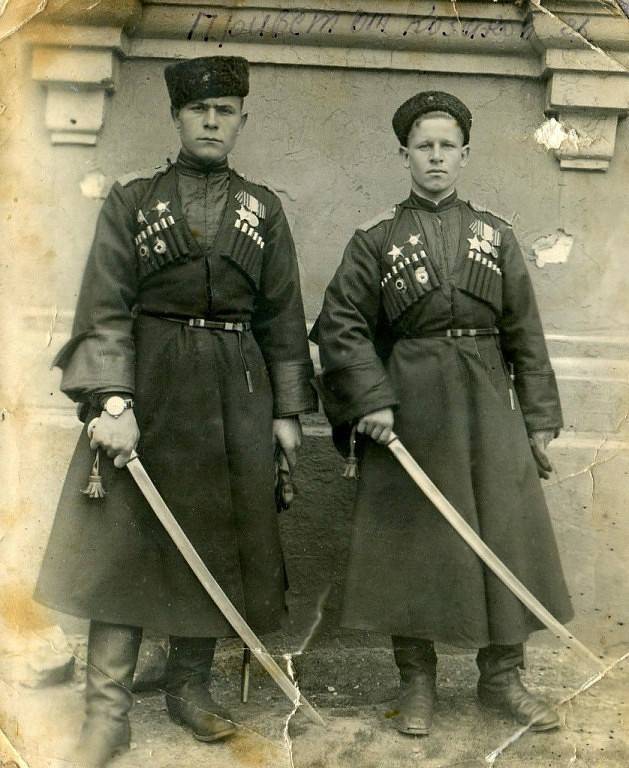
However, in 1941, the hats began to slowly withdraw from the supply of the army. The functionality of this legendary headgear in the new conditions was extremely low. And although in the partisan and cavalry formations the papakha lived up to the Victory Parade in 1945, her time as part of everyday uniforms was gone.
According to the order of the NPO of the USSR of 1940, the "Regulation on the uniform of the generals of the Red Army" was introduced. Thanks to this position, the cap was preserved in the army, but exclusively as a winter headdress for the general. A little later, in 1943, the cap was introduced for colonels of all military branches.
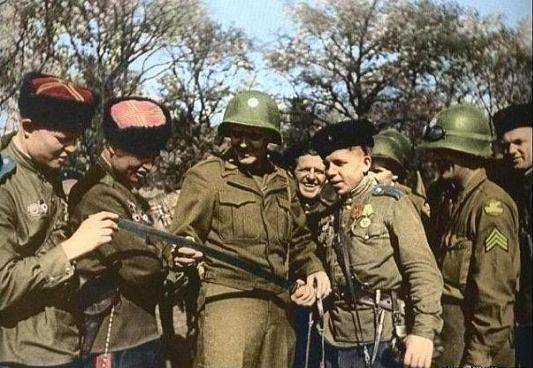
Papakha survived until the collapse of the Soviet Union. The new Yeltsin’s power, despite the open opposition to the Soviet period, took up the elimination of more than a century-old tradition of the papakha with much more enthusiasm than the red ones. In 1992, for the first time, the question arose of abolishing popes for the general in principle. By all means, Boris Nikolaevich, contrary to common sense, sought to make his army look different than the Soviet army ... Everyone knows the results. Then the hats began to be replaced with ordinary hats, and since there was always not enough money, the change of dads lasted for many years.
Finally, in 2005, the hats “rehabilitated” for senior officers.
Modern funny "challenges" to old traditions
Undoubtedly, the cap is a cult object, both for the Russian people (especially southerners) and for the mountain peoples. This is a symbol of masculinity, and a symbol of honor, and a symbol of fidelity to the roots. But the part of the modern “mimic” society, which is loaded into the global network with all the cells of the brain, does not understand these roots, and therefore does not transfer it to the spirit.
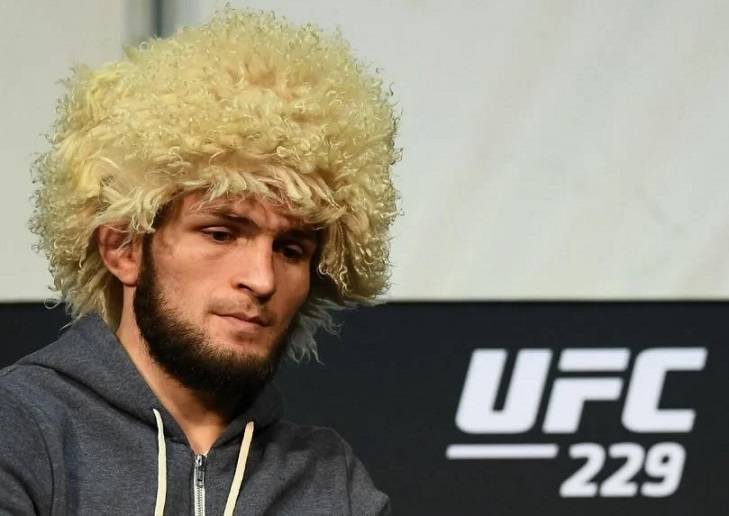
The famous athlete Khabib Nurmagomedov goes to his fights in a simple shepherd's sheepskin hat. In this way, the UFC fighter demonstrates his love for the traditions of his ancestors and designates his small Homeland. He had to give dozens of interviews to foreign journalists until they realized that this was not a wig, but a headdress and very old. Voluntarily or involuntarily, with this gesture, Khabib multiplied orders for the Caucasian master hats. They even got customers from the USA. It would seem a good thing ...
But during another interview, Habib said:
Not even a week had passed before the young women, who were trying to earn a little cheap popularity on the network, were outraged and started a flash mob, posting their photos in popes on the network. And since the Caucasian feminists (there are some), popularized by pro-Western resources, but living far from the Caucasus, instantly supported this clowning, the scandal flared up quickly.
Fortunately, the ancient tradition is ancient. She will survive it.
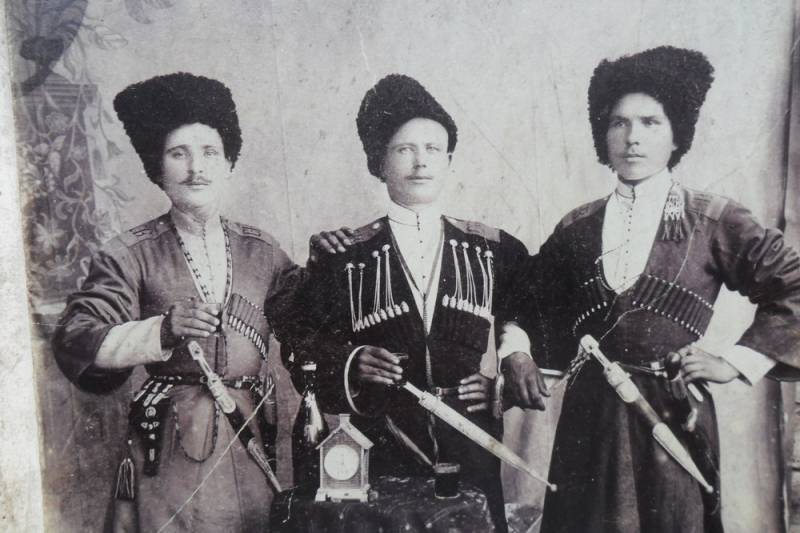
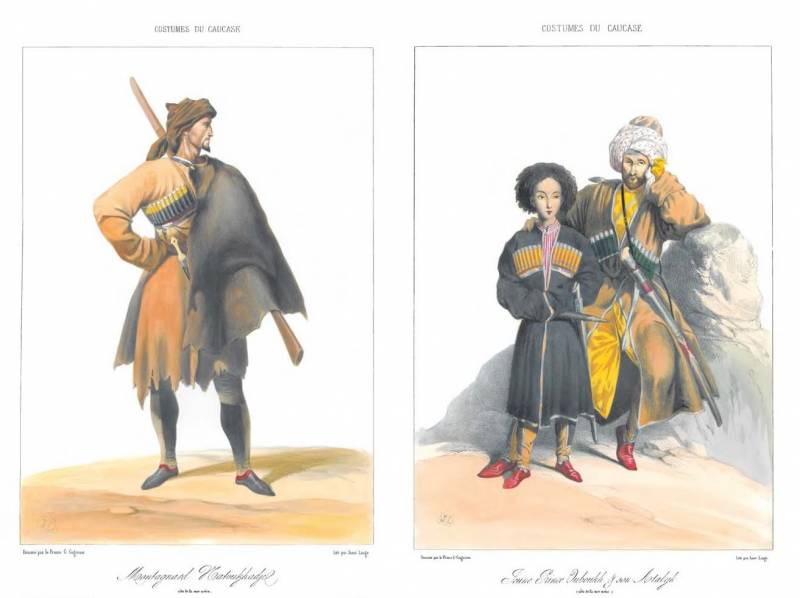
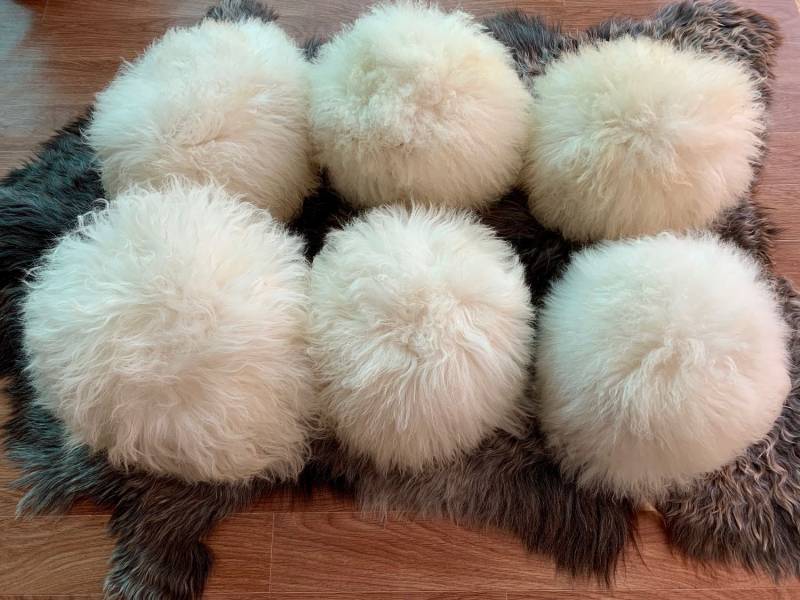
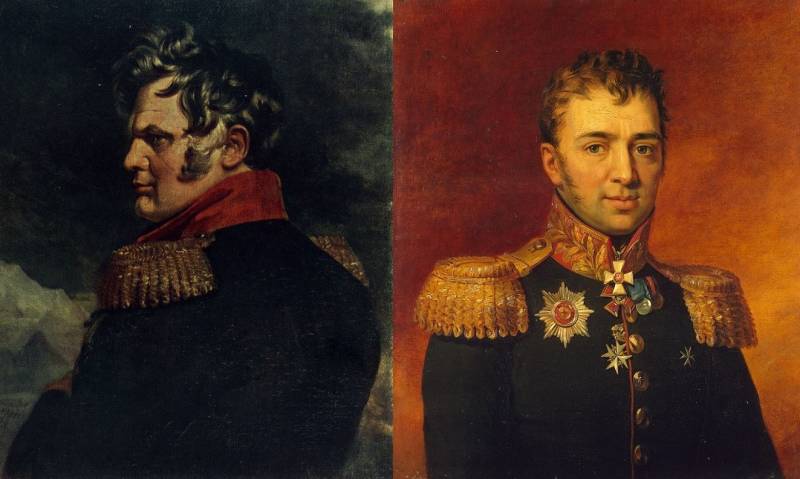
Information